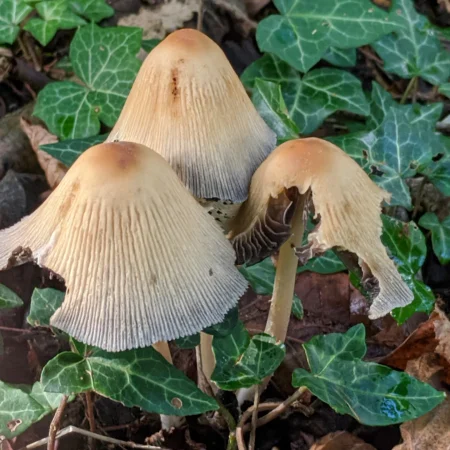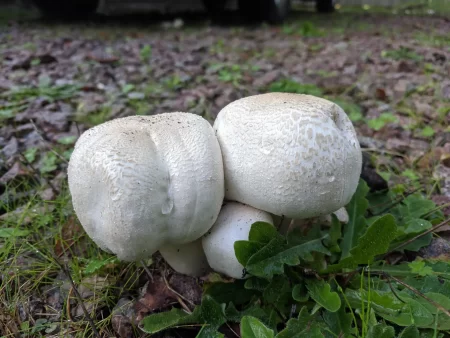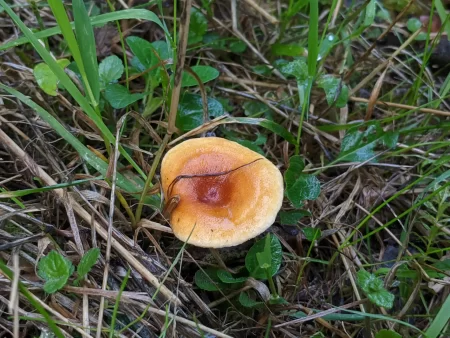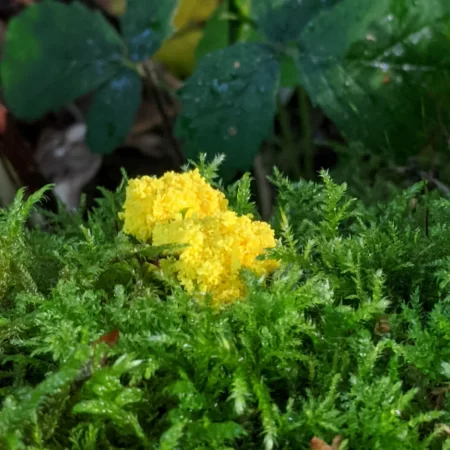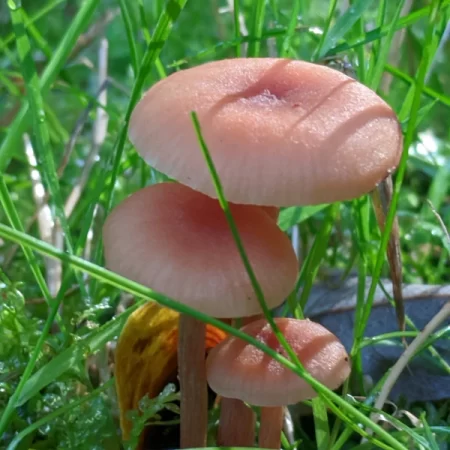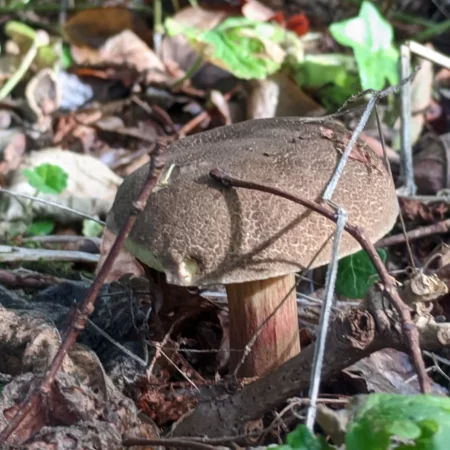ENTRANCE AREA
On the path from the main car park to the Railway Crossing, I saw Coprinellus micaceus (Fig. 2.0).
In the reception area, forward of the timber clad building, I found a number of large white Agaricus species (Fig. 2.1) scattered in the stone chippings.
ENTRANCE PATH
On the path to Basecamp, I found a Mycena species (Fig. 2.2), a Hygrophoropsis aurantiaca (Fig. 2.3) and a yellow slimemould which could have been Mucilago crustacea (Fig. 2.4).
BASECAMP AREA
In the grass at the edge of the path, on the Basecamp Loop, I saw Laccaria laccata (Fig. 2.5).
At Basecamp I saw a large brown fungus (Fig. 2.6), a Bolbitius titubans (Fig. 2.7) and Mutinus caninus (Fig. 2.8).
Unidentified
Basecamp
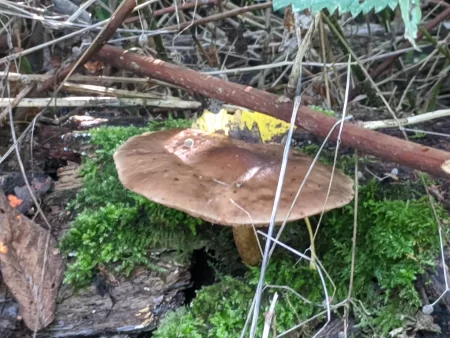
Figure 2.
Bolbitius titubans
Basecamp
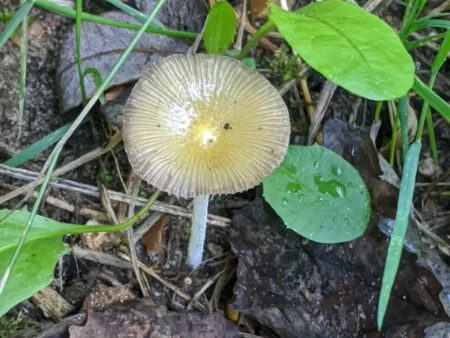
Figure 2.
Mutinus caninus
Basecamp
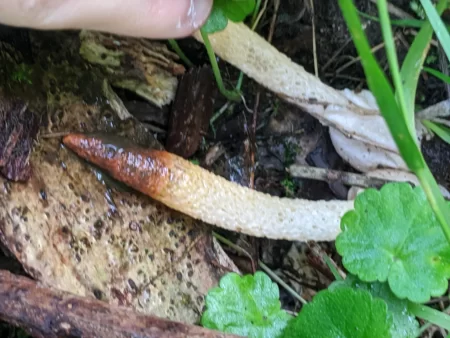
Figure 2.
THE DELL
In and around The Dell I saw a red stemmed Xerocomellus species (Fig. 2.9).
ENCLOSED AREA
I spotted a Clavulina species which I think is Clavulina coralloides (Fig. 2.10).
Whereas C. coralloides has white or cream fruitbodies, C. cinerea is very similar in form — both can have either crested or rounded tips — but is grey in colour.
However, when parasitised by micro fungi, C. coralloides can turn to darker shades of grey or brown, making identification difficult.
I also found an Inocybe species (Fig. 2.11), a few tiny Mycena acicula (Fig. 2.12) and juvenile Picipes badius on a large fallen tree (Fig. 2.13).
Clustered around the fallen branches and twigs were troopss of Marasmiellus ramealis.
Clavulina coralloides
The Enclosed Area
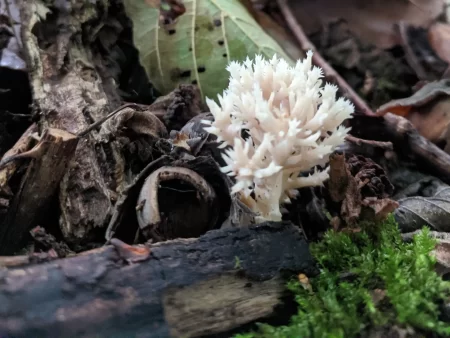
Figure 2.
Inocybe species
The Enclosed Area
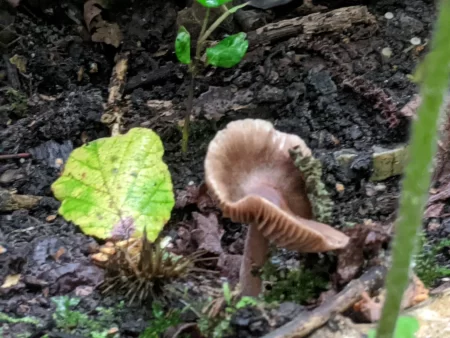
Figure 2.
Mycena acicula
The Enclosed Area
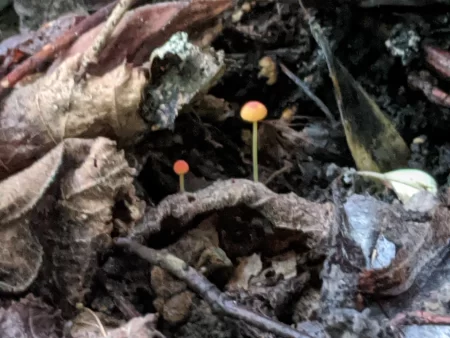
Figure 2.
Picipes badius
The Enclosed Area
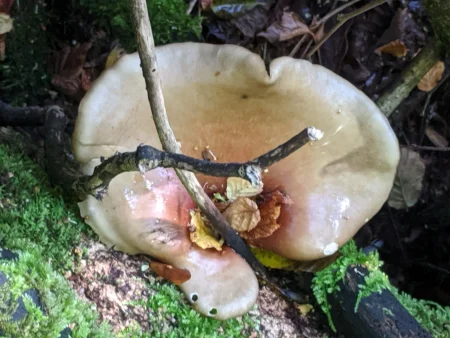
Figure 2.
YEW GROVE AREA
Further along the Woodland Trail, I found what looked like Paxillus involutus (Fig. 2.14).
Off the path to the right, I found Amanita fulva (Fig. 2.15), followed by a Peziza species (Fig. 2.16).
Paxillus involutus
Yew Grove Area
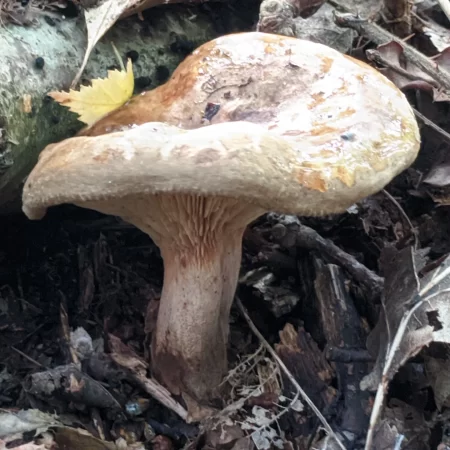
Figure 2.
Amanita fulva
Yew Grove Area
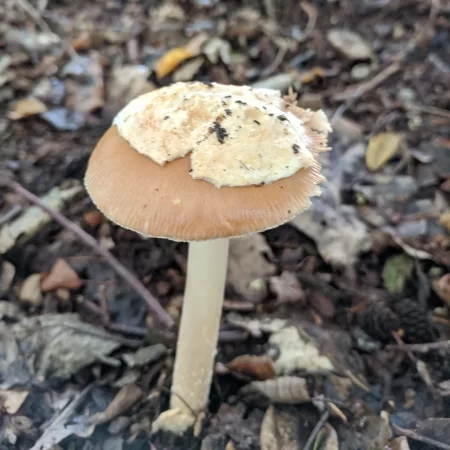
Figure 2.
Peziza species
Yew Grove Area
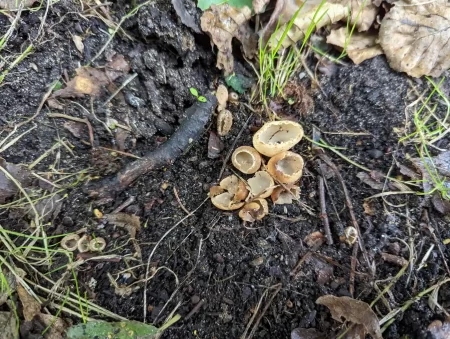
Figure 2.
TRAIL END
Back on the path I found Auricularia auricula on a rotting log (Fig. 2.17).
Past The Outpost, on a pile of logs I found a sprawling yellow slime mould — Fuligo septica (Fig. 2.18), Stereum subtomentosum (Fig. 2.19), and some Calocera cornea (Figs. 2.20).
Auricularia auricula
Trail End Area
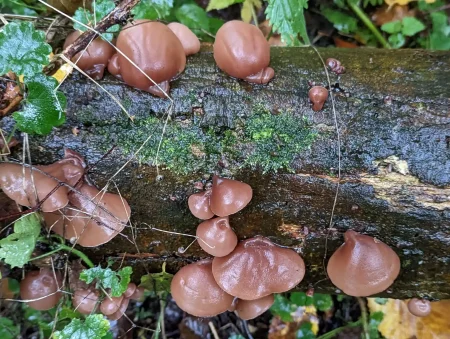
Figure 2.
Fuligo septica
Trail End Area
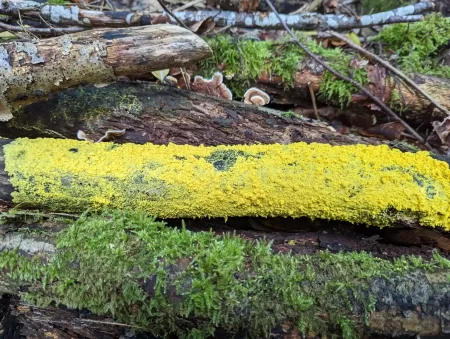
Figure 2.
Stereum subtomentosum
Trail End Area
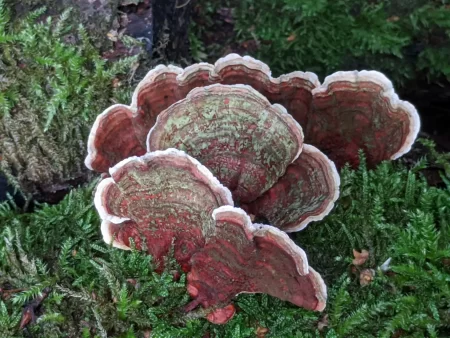
Figure 2.
Calocera cornea
Trail End Area
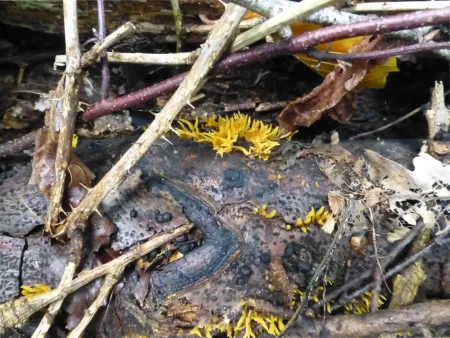
Figure 2.
OTHER
Throughout the fen, as in last week, I found Parasola conopilea.
